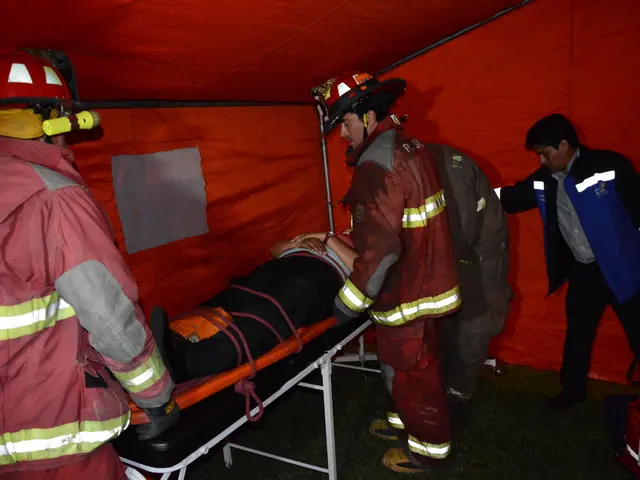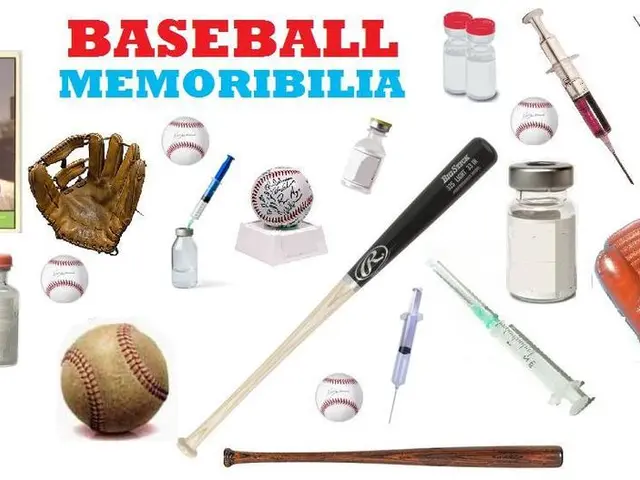Warning Symbols: Meaning, Medications, and Additional Details
In a bid to ensure the safety of medication users, the Food and Drug Administration (FDA) issues boxed warnings for certain drugs that carry serious risks. These warnings, which are the most serious, are designed to alert patients and healthcare professionals about potential dangers associated with the drugs.
The FDA's decision to impose a boxed warning is based on the risks a medication poses. Some common medications with boxed warnings include Isotretinoin (Accutane), Methotrexate, Fluoroquinolone antibiotics, Opioids, Antidepressants, Atypical antipsychotics, Benzodiazepines, and certain drugs in the JAK inhibitor class.
Isotretinoin, for instance, can lead to severe birth defects if taken during pregnancy. Methotrexate is associated with liver toxicity and potential organ damage. Fluoroquinolone antibiotics increase the risk of tendon rupture and potential nerve damage. Opioids, such as Oxycodone and Hydrocodone, pose a high risk of addiction, abuse, misuse, life-threatening respiratory depression, neonatal opioid withdrawal syndrome, and risk of coma or death, especially when combined with CNS depressants.
Antidepressants, including SSRIs and SNRIs, increase the risk of suicidal thoughts and behaviors in children, adolescents, and young adults. Atypical antipsychotics, like Aripiprazole and Olanzapine, pose an increased risk of death and cerebrovascular events in elderly patients with dementia-related psychosis. Benzodiazepines, such as Alprazolam and Clonazepam, carry risks of abuse, misuse, addiction, and potentially fatal respiratory depression, especially when combined with other CNS depressants.
Certain medications in the JAK inhibitor drug class, such as baricitinib (Olumiant), tofacitinib (Xeljanz, Xeljanz XR), and upadacitinib (Rinvoq), have been updated with boxed warnings about the serious risks of major cardiovascular events, cancer, blood clots, and death.
It's crucial for individuals to discuss any concerns or questions about starting a new medication with a healthcare professional. This includes understanding how a medication may affect them and the potential risks involved. Doctors must review the risks and benefits of a medication with a boxed warning before prescribing it.
Boxed warnings come with a black box around them on the medication packaging and paperwork, making them easily identifiable. They indicate serious or life-threatening risks that require careful patient monitoring and weighing of benefits versus risks by healthcare professionals. Some drugs may also be subject to special prescribing restrictions as part of the FDA's Risk Evaluation and Mitigation Strategies (REMS).
The general drug development process includes laboratory research, preclinical research, clinical research, review, and post-marketing safety monitoring. Over 400 medications currently carry boxed warnings, according to 2022 research.
Remember, if a person develops a physical dependence on an opioid drug, they may have opioid use disorder. Help is available for individuals in crisis considering suicide or self-harm, including the 988 Lifeline, Crisis Text Line, Befrienders Worldwide, and local emergency services.
In the case of benzodiazepines, potentially life-threatening reactions include catatonia, seizures, delirium tremens, depression, hallucinations, thoughts of harming others, mania, psychosis, and suicidal thoughts or behaviors. Clonazepam, which treats panic disorder and seizures, can cause severe side effects when taken with an opioid, including severe drowsiness, slowed breathing, coma, and death.
The FDA recently announced a boxed warning for all drugs in the antidepressant drug class, and all immediate-release (IR) opioid pain medications have received a new boxed warning about the serious risks of misuse, addiction, dependence, and withdrawal.
In conclusion, while medications can provide significant benefits, it's essential to be aware of the potential risks, especially when they come with a boxed warning. Always discuss any concerns with a healthcare professional and make informed decisions about your health.
- The Food and Drug Administration (FDA) has issued a boxed warning for all drugs in the antidepressant drug class, indicating serious or life-threatening risks that require careful patient monitoring and weighing of benefits versus risks by healthcare professionals.
- In addition to Isotretinoin and Methotrexate, certain medications in the JAK inhibitor drug class, such as baricitinib, tofacitinib, and upadacitinib, have been updated with boxed warnings about the serious risks of major cardiovascular events, cancer, blood clots, and death.
- Clonazepam, which treats panic disorder and seizures, can cause severe side effects when taken with an opioid, including severe drowsiness, slowed breathing, coma, and death, making it essential for individuals to discuss any concerns or questions about starting a new medication with a healthcare professional.




